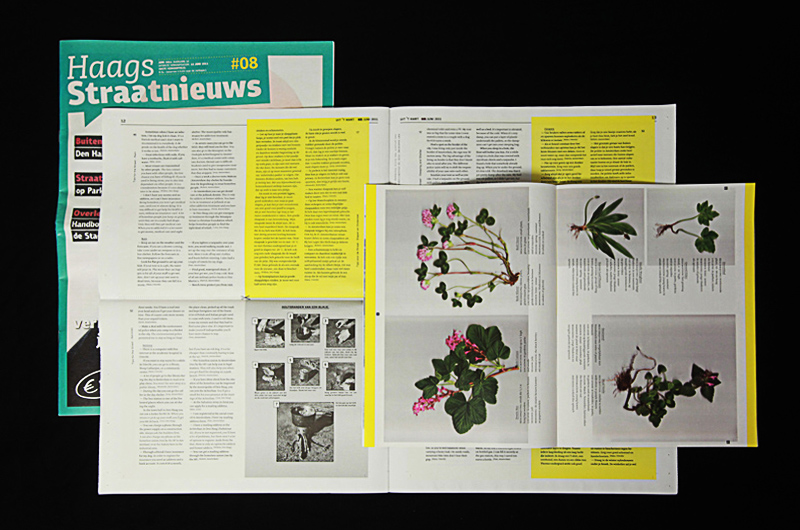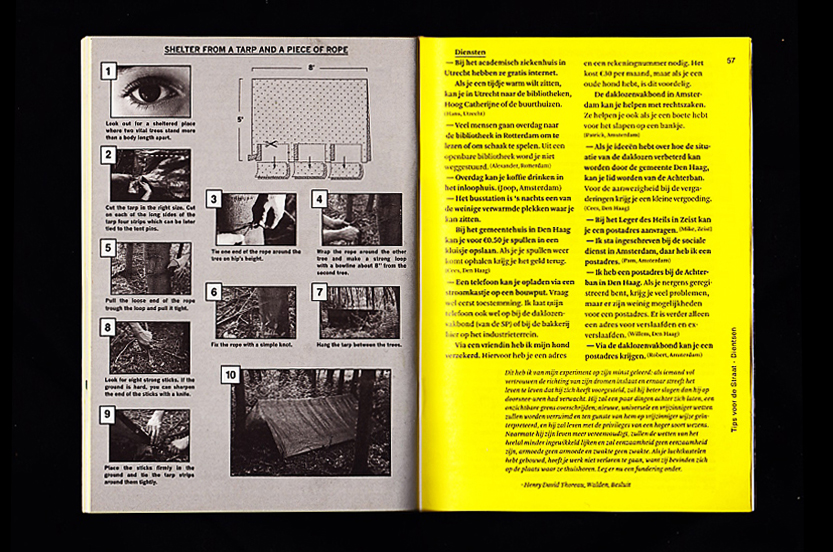Handboek voor de Stadswildernis
Initiator(s)
Doris Denekamp, Noah Venezia
Description
Handboek voor de Stadswildernis is a guide for survival in the fringes of Dutch cities. The handbook contains sections like Sleeping & Shelter; Food; Equipment; Clothing; Washing; Sickness; Emergencies & Services. The book also provides a guide for edible city weeds: a short description of the plant, the location where it can be found and how it should be cooked. All the information, tips and tricks in the book is based on a series of interviews with homeless people that have developed similar strategies for survival. Through their practices of recycling, reclaiming the surplus of the food industry and their use of local, informal economies, they are developing useful alternatives for our wasteful society.
Location
The Netherlands
Goals
To validate and distribute the knowledge of people living without a regular home.
To help others living in similar situations or those who are looking for an alternative to the dominant practise of waste and extravagance.
To investigate the possibility of a life off the grid in a densely populated area of the Netherlands.
Beneficial outcomes
Knowledge of those living without regular homes is distributed validating the way of life of people on the fringes of society whilst also giving them a voice. This allows a better insight into this world helping to prevent false assumptions and prejudice from outside.
The information was widely distributed through the different homeless peoples' newspapers so people had easy access to these tips and tricks for use in their daily lives.
Maintained by
Handboek of de Stadswildernis was published by the Dutch Art Institute in 2011 as part of DAI Publications. The book was produced in close collaboration with Werkplaats Typografie in Arnhem and the designer Noah Venezia. Distributed by several book stores like 'De Rooie Rat' in Utrecht, 'Fort van Sjakoo' in Amsterdam and 'Printroom' in Rotterdam as well as by Doris Denekamp through her website.
Users
People without regular homes, people interested in recycling, re-using the surplus of the food industry, eating wild plants and other critical practices. And people who aim to get a deeper understanding of what it means to live in the fringes of society, both in the Netherlands and the US and Brazil.
Links
http://www.dorisdenekamp.nl/index.php?/2011/handboek-voor-de-stadswildernis/http://cryptoforest.blogspot.nl/2011/10/guide-to-city-wilderness.html


